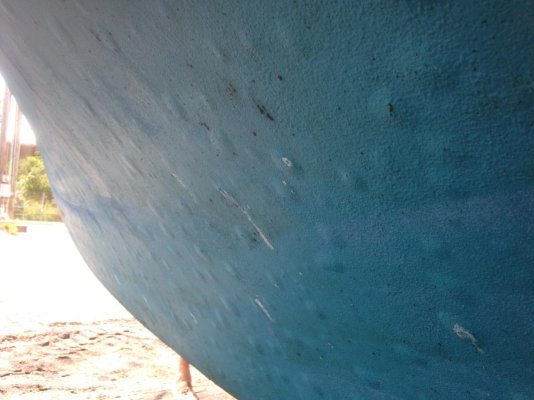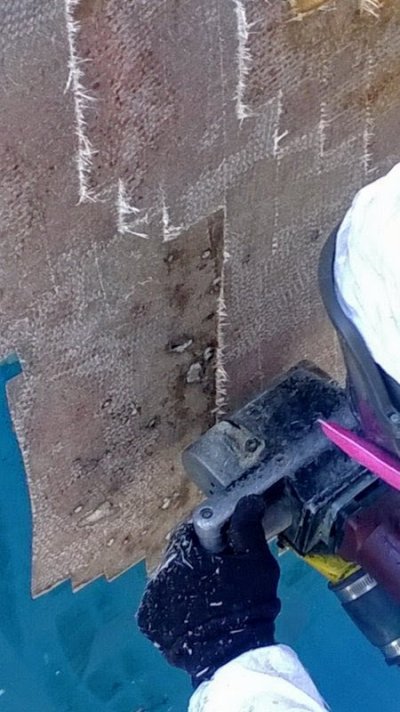AZ2Loop
Senior Member
We just had an early 90's Albin hauled out during a survey. Mechanically, it could not have performed better. We were very pleased with the Cummins 6BTA's. Things seemed to be going well.
Then we pulled it out of the water and I was pretty disappointed. Blisters.... and I mean blisters. As in no way to count them all. I'll try to attach pictures.
A moisture meter also showed some moisture in the stringers, but they tapped out well and seemed solid. They also appeared solid on a back down test where they were shifting the transmissions from forward to reverse and then adding pretty significant throttle to try to detect movement around mounts/stringers with that pressure. All seemed good there. Still, though, some moisture in the stringers per the moisture meter.
Aside from the things we already knew and expected would need attention, the condition of the bottom (all of those blisters) and the moisture were real disappointments.
It's a 25+year old boat -- so we do not expect perfection. Far from it! However, am I overreacting or am I right to be extremely concerned with this level of blistering and some concern over the stringers? Thanks for any thoughts.
Then we pulled it out of the water and I was pretty disappointed. Blisters.... and I mean blisters. As in no way to count them all. I'll try to attach pictures.
A moisture meter also showed some moisture in the stringers, but they tapped out well and seemed solid. They also appeared solid on a back down test where they were shifting the transmissions from forward to reverse and then adding pretty significant throttle to try to detect movement around mounts/stringers with that pressure. All seemed good there. Still, though, some moisture in the stringers per the moisture meter.
Aside from the things we already knew and expected would need attention, the condition of the bottom (all of those blisters) and the moisture were real disappointments.
It's a 25+year old boat -- so we do not expect perfection. Far from it! However, am I overreacting or am I right to be extremely concerned with this level of blistering and some concern over the stringers? Thanks for any thoughts.





